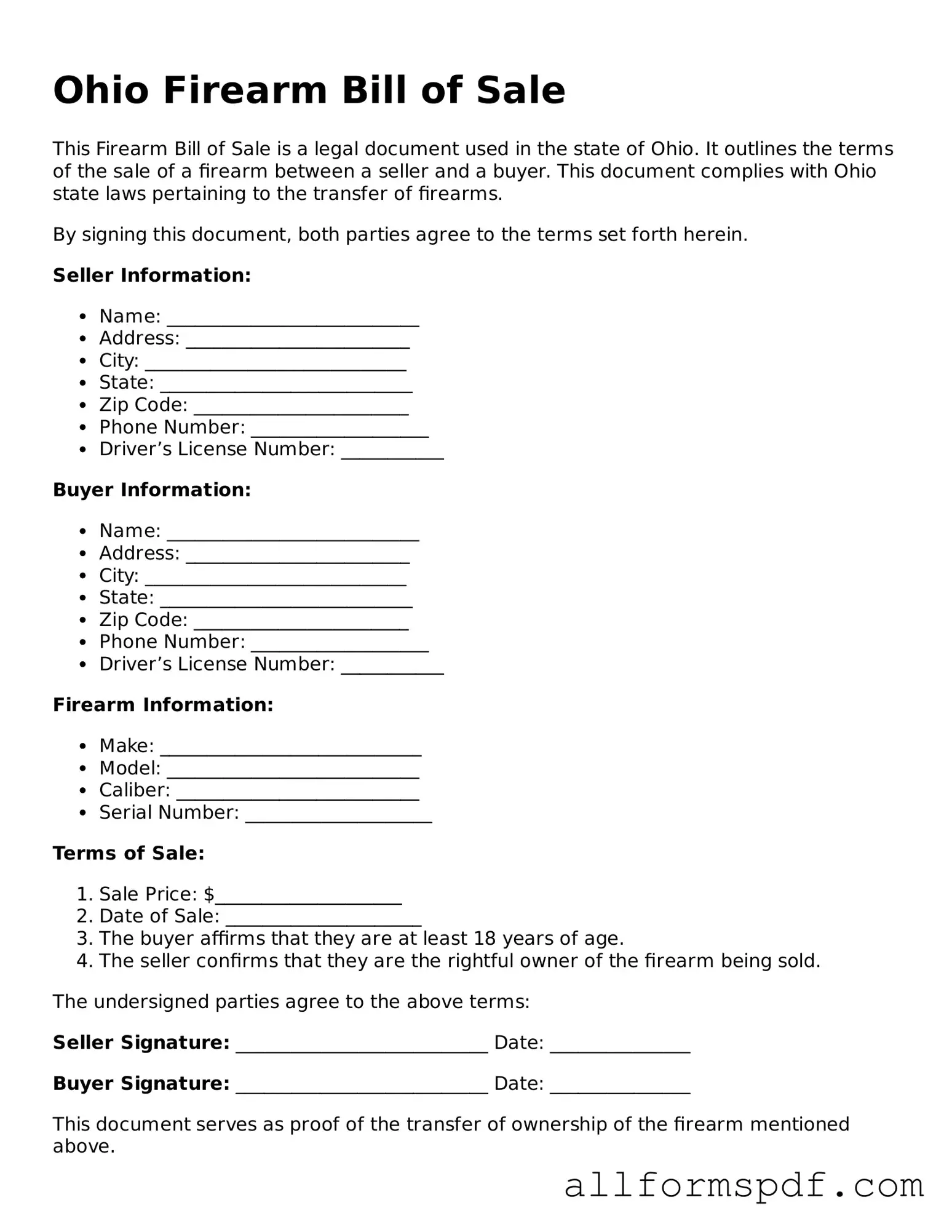Fillable Firearm Bill of Sale Form for Ohio
The Ohio Firearm Bill of Sale form serves as a legal document that records the sale and transfer of firearms between individuals. This form provides essential details about the buyer, seller, and the firearm being sold, ensuring compliance with state regulations. Properly completing this document helps protect both parties in the transaction and maintains a clear record of ownership.
Create My Firearm Bill of Sale Now
